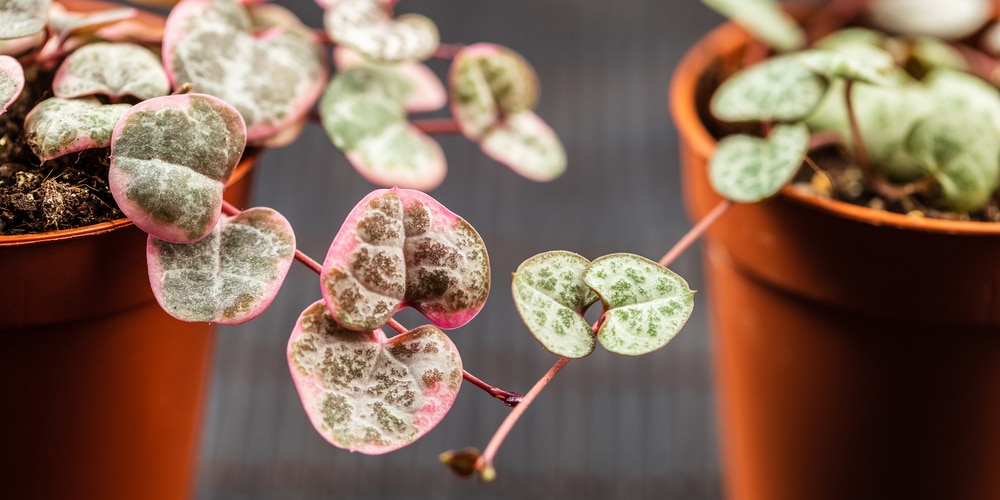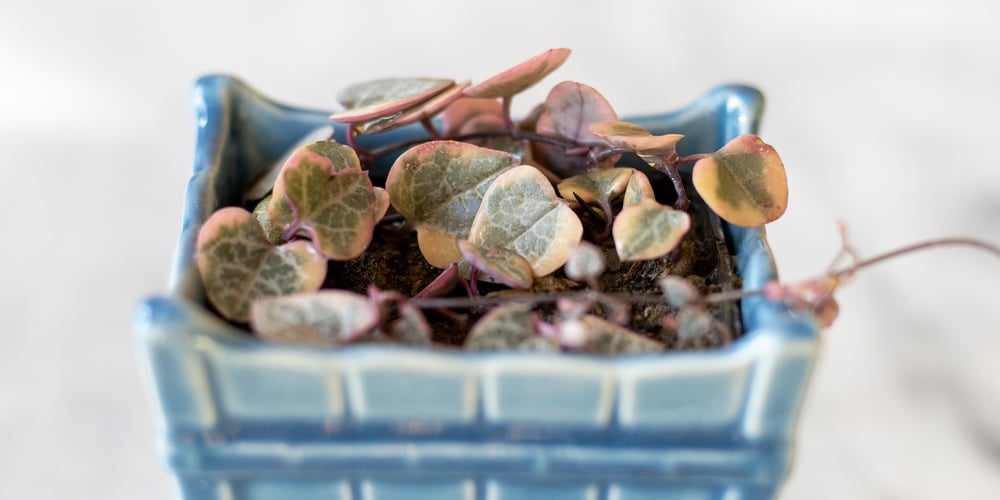One of the most beautiful trailing plants out there, String of Hearts has its unique charm. Best placed on hanging pots, these plants look gorgeous with their heart-shaped leaves. Tiny little flowers bloom on the tips of the stems, adding to its beauty. You may be wondering, how to propagate string of hearts.
Native to South America, String of Hearts is a semi-succulent plant, with its heart-shaped leaves arranged along with its thin, trailing stems. The plant can grow up to three feet long and does best in bright, indirect sunlight.
If you’re looking for a plant that’s both aesthetically pleasing and relatively easy to care for, you’ll want to consider String of Hearts. Propagation is also relatively simple and only requires a few materials.
Things to Check Before Propagating String of Hearts

While the process is pretty simple, you may want to make sure that your plant is healthy enough to propagate. First and foremost, you want to ensure that you’re propagating a healthy plant, to begin with.
If you suspect any form of infection or disease, put your propagation plants on hold. It’s best to wait until your plant has recovered before trying to propagate it.
Once you’ve confirmed that your String of Hearts plant is healthy, check the stems for signs of new growth. These are the areas where you want to take your cuttings from as they will be more likely to produce new roots.
Make sure that the cutting you take has at least two nodes or leaves attached to it. These are the areas on the stem where new roots will form. If there are no leaves or nodes present, your cutting may not be able to produce new growth.
If everything looks good, then you’re ready to start propagating!
How to Propagate String of Hearts
Once you’ve done your preliminary checks, it’s time to start propagating!
1) You’ll need a small pot or containers, a sharp knife or garden shears, some potting mix, and water.
2) Start by sterilizing your tools with rubbing alcohol or soapy water to prevent the spread of disease. Many gardeners will also sterilize their pots or containers as well.
Rinse them off with clean water and let them air dry or pat them down with a clean towel. Skipping this step may lead to infection or disease in your propagating plants.
3) Fill your pot or container with a well-draining potting mix. Water the soil until it’s damp but not soggy. Since the string of hearts doesn’t like to sit in water, it’s important to make sure that the potting mix is well-draining. Additionally, you may want to consider adding some perlite or vermiculite to the mix.
If you’re not sure how to make your own potting mix, you can use a premixed succulent or cactus soil from your local garden center. This may be your best bet if you’re new to propagating plants.
4) Take your cutting from the mother plant, making sure to get a stem with at least two nodes or leaves. When cutting, ensure that you’re doing so from an angle just below the node. This will give you the best chance for successful propagation.
If you’re having trouble finding a cutting with nodes, try taking a longer stem cutting and remove the leaves from the bottom half. This will expose the nodes and allow them to come into contact with the soil.
5) Once you’ve taken your cutting, place them on a clean piece of paper or towel and allow the cut end to callous over. This process can take anywhere from a few hours to a day or two. This process is faster when done in a warm, humid environment.
If you’re in a hurry, you can dip the cut end of the stem into some rooting hormone powder. This will speed up the callousing process and help to promote root growth.
After the cutting has calloused over, it’s time to plant it!
6) Take your pot or container and make a small hole in the center of the soil. Gently insert the cutting into the hole, ensuring that the nodes are in contact with the soil. Don’t overplant your container, as this can lead to problems with drainage.
Once the cutting is in place, give it a good watering. Be sure to water the soil thoroughly (not your new cuttings). It needs to be damp but not soggy.
7) String of hearts does best in bright, indirect light but can tolerate some direct sun. For newly propagated plants, it’s best to give them some indirect light and gradually introduce them to more direct sun.
How to propagate string of hearts: Final Thoughts
The string of hearts always looks beautiful trailing down a bookshelf or cascading over a windowsill. They’re easy to take care of and make for great houseplants.
If you’re looking for a plant that’s unique and eye-catching, then the string of hearts is definitely the plant for you! If you already have one and want to share the love or simply add some more inside your home, follow the steps above to easily propagate your own.
Related article: Overwatered String of Hearts
